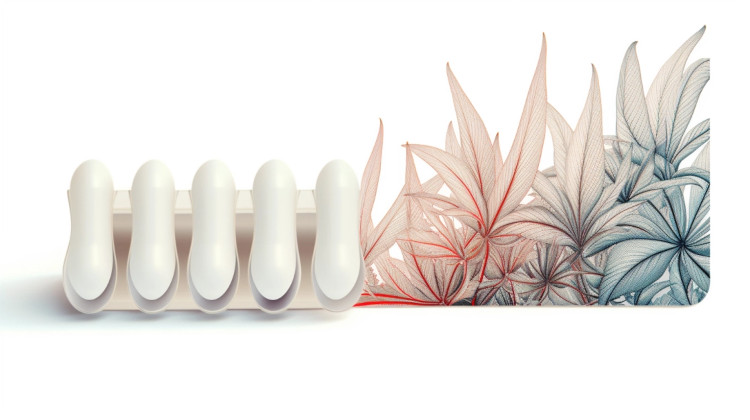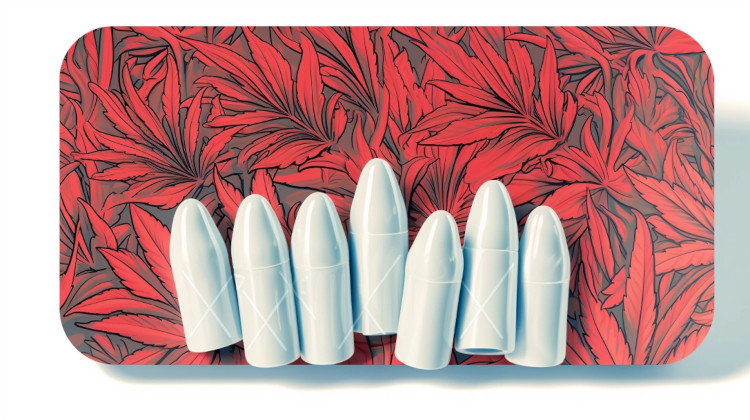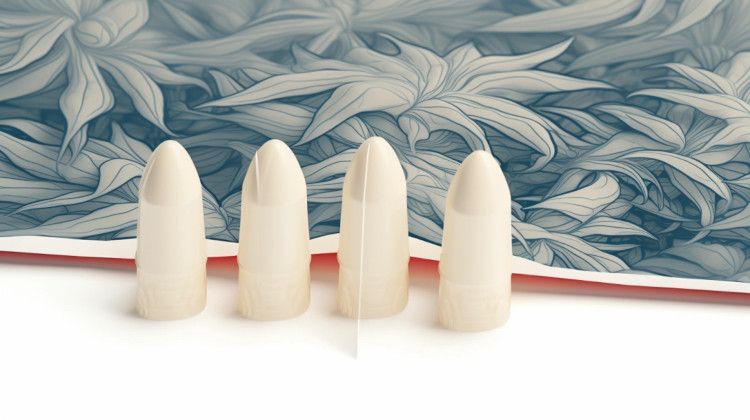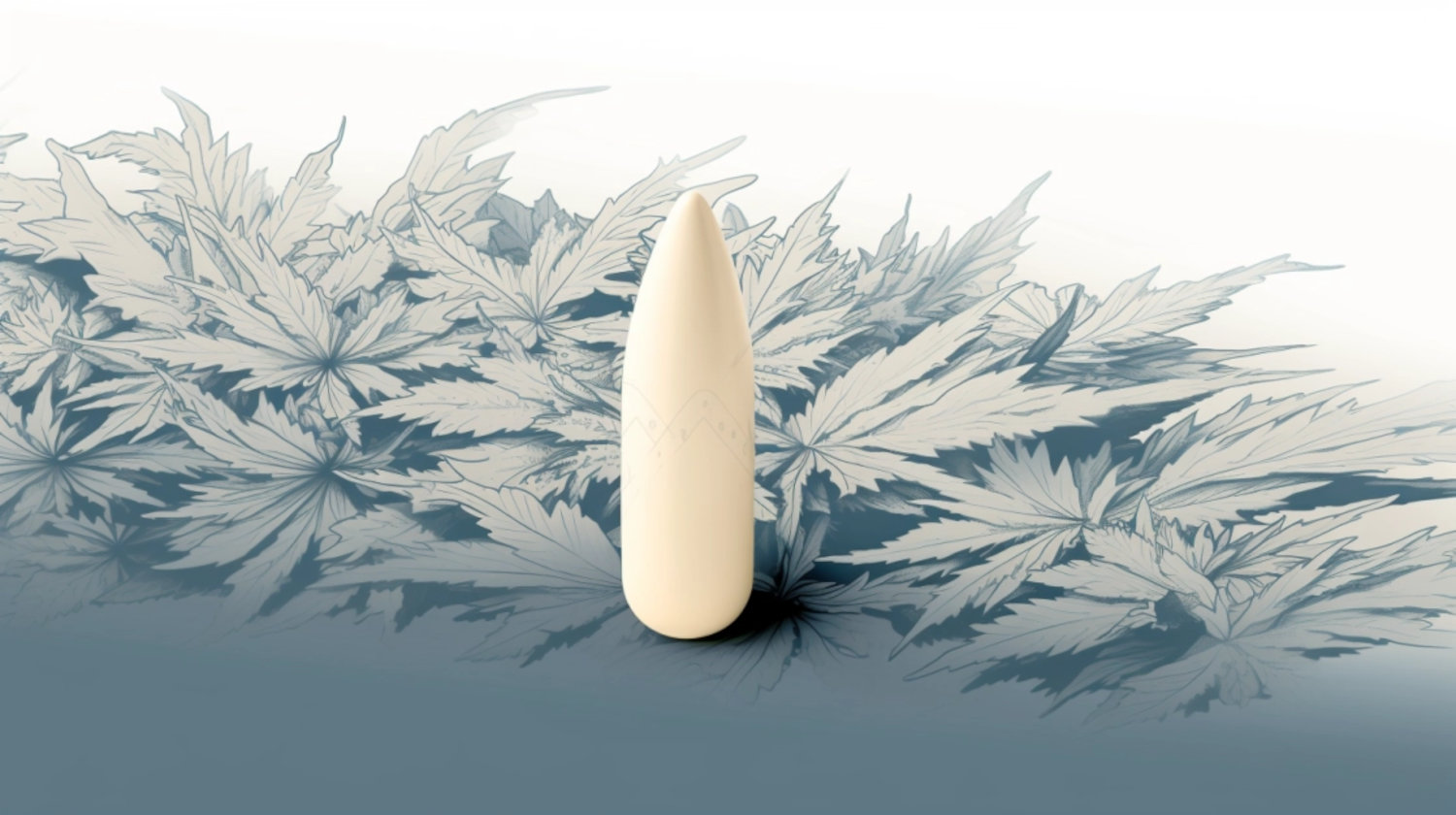The growing acceptance of cannabis has led to many new ways of consuming the plant. Even now, people are discovering new ways to absorb the herb's reported therapeutic effects. One of these novel ways is through THC suppositories.
Consumers often overlook weed suppositories in preference for the other products lining dispensary shelves, such as topical skin products, oil-filled oral tinctures, cannabinoid-laced drinks and edibles, water-soluble cannabinoid powders, "dabbable" extracts, and vaporizable flower.
Cannabis suppositories dissolve into mucous secretions inside the body's cavities to release their curative effects. Although these medicinal cannabis products don't claim as much limelight as capsules, supplements, and oil tinctures, suppositories are a discreet option for treating multiple conditions.
If we rewind to the 19th century, we would see male and female patients choosing cannabis suppositories to relieve gynecological disorders and migraines. Fast-forward to today, and people still use THC suppositories for relief from gynecological, menopausal, lower back, bowel, and hip pain, among many other ailments.
What are THC Suppositories?
THC suppositories are the same as other types of medicinal suppositories. They can be administered privately at home and are usually enriched with the intoxicating cannabis compound, tetrahydrocannabinol (THC), but may also contain other primary cannabinoids, such as cannabidiol (CBD).
Currently, based on a report published in Current Opinion in Psychology, "Controlled studies on commercially available topical cannabis products, suppositories, concentrates, and products for which the primary chemical constituent is anything except THC or CBD are mostly absent."1
Nonetheless, researchers do know that suppositories are capable of delivering a drug into the bloodstream via the rectum or vagina. THC suppositories are usually around the size of a fingertip or smaller, with common shapes including circular, cone, or tampon-like.
The route of administration affects how a cannabis suppository works. Users report that vaginal suppositories may ease pelvic pain (e.g., endometriosis), discomfort during intercourse (dyspareunia), vulvar pain (vulvodynia), vaginal dryness (atrophic vaginitis), and menstrual pain (dysmenorrhoea). In contrast, rectal suppositories may help with hemorrhoid inflammation and digestive issues, among many other things.
Since the THC element of weed suppositories demonstrates therapeutic promise in clinical trials as a natural painkiller, THC vaginal suppositories may help to manage pain within the female reproductive tract.
Some patients with constipation may also turn to cannabis-based anal suppositories to empty the bowel and flush the colon. This type of rectal cannabis product is called a "THC enema." However, we don’t have enough research to say if using THC in this way is considered to be safe.
A 2019 study investigating cannabinoids on colonic motility saw a 30% decrease in constipation risk among recent cannabis consumers, as opposed to past users or non-consumers.2
It's important to note that Δ9-THC's non-rectal absorbance has forced medicinal drug manufacturers to develop pro-drug formulations. THC-hemisuccinate (THC-HS) lends impressive potential for sustained delivery with admirable bioavailability and reduced "first-pass metabolism," but it is not commercially available.3
How Do Weed Suppositories Work?

THC targets both CB1 and CB2 receptors.4 After being released from the oily packaging that binds it, it embarks on a journey through the bloodstream. Once inserted, the warmth and moisture of the vaginal or rectal walls melt the oily shell concealing the medicine before the mucous membranes begin absorbing the THC.
You may notice a feeling of warmth in the pelvic region as the THC starts swirling through the bloodstream, and the potential benefits of THC are distributed throughout the endocannabinoid system. Cannabis' intoxicating component makes its way to the brain, bypassing the liver; therefore, it does not cause the intoxication associated with other consumption methods like smoking, vaping, and edibles.
CB1 receptors — one of two types of receptors belonging to the endocannabinoid system (ECS) — are distributed throughout the male and female reproductive systems and the urinary tract, including normal human colon and colonic epithelium, the ovaries, uterus, testis, prostate, placenta, adrenal gland, endometrium, spleen, and heart.5
Researchers have also "confirmed the presence of CB2 receptors in the ovarian cortex, ovarian medulla, and ovarian follicles from human samples," suggesting that THC vaginal suppositories may be important for maintaining female reproductive health.6
Research shows that ECS impairment is linked to pathological conditions involving reproductive organs. Blastocyst implantation, embryo transportation via the oviduct, and the balancing of oocyte and follicle maturation are just a few essential actions that endocannabinoids influence.7
Benefits of THC Suppositories
The most obvious benefit associated with THC suppositories is the discretion they provide users. Suppositories are ideally suited to medical cannabis patients who don't want to smoke their medicine or perhaps don't want others to know their treatment choice.
A 2018 Canadian report stated that 50% of THC is usually transformed into its more intoxicating form, 11-Hydroxy-THC, when taken orally. Rectal administration is reported to avoid these effects, allowing more THC to reach the bloodstream, resulting in a higher bioavailability of Δ9-THC by the rectal route (52-61%) than by the oral route. However, the research was done using an ester of delta-9 THC, and we currently have no data on true delta-9 THC itself.
Although many patients using this method report that rectally administered cannabis does not cause intoxication like other forms of administration might — e.g., smoking, vaping, or edibles — making it a potential choice for patients who want to reap the therapeutic rewards of THC without dealing with the intoxicating effects.
THC vaginal suppositories are among the best female cannabis products for patients seeking swift symptomatic relief, e.g., using weed for menstrual cramps. Unlike products with delayed onset, such as edibles (30 minutes to two hours), or products with quickly fading effects, such as smoking or vaping (1-3 hours), suppositories may work in 10 to 15 minutes and last up to 8 hours.
The mucous membranes inside the orifice absorb weed suppositories. Despite a lack of consistent research highlighting the rectal/vaginal absorption onset and effect duration, studies on the oral mucosal route signal a 15-45 min onset and effect duration of 6-8 hours.8
Weed suppositories provide desirable bioavailability, with one study exploring a rectally administered prodrug of delta-9 THC that had a bioavailability of 45-53%.3 Although this research was using a delta-9 THC prodrug, it may give us an idea of what to expect from using THC in a rectal suppository. Compared to the oral bioavailability of THC, which is only 6%, the potential of rectal suppositories is promising.9
Aside from female reproductive health problems, the suppository route may benefit patients with difficulty swallowing (such as people with multiple sclerosis) and those with emesis (such as chemotherapy-related nausea and vomiting).
Risks of Using Weed Suppositories

THC suppositories may come with certain risks you should be aware of before introducing them into your healthcare routine. Although not specific to cannabis suppository products, bloating, gas, stomach cramping, loss of normal bowel function after ceasing use, and nausea are some common side effects of suppositories.
Consider what base ingredients seal the THC inside a cannabis suppository to avoid an allergic reaction. Glycerol is commonly used to create suppositories and is renowned for being safe and non-reactive with other types of medication. Other suppository bases include oil-based ingredients like theobroma oil, water-soluble bases like glycerinated gelatin, and polyethylene glycol polymers.
Suppository formulations are usually well tolerated with no observable safety issues, as shown in a study published in Medical Cannabis and Cannabinoids.3
Nonetheless, patients should practice caution when using rectal suppositories, which may cause unwanted intoxication but is unlikely. Allow the sphincter to pull the suppository inwards for the best results naturally.
Review the ingredients before consumption to avoid potential side effects and risks. Also, consult with your doctor or healthcare practitioner for a physical examination and blood tests beforehand to rule out allergies.
How to Make a Cannabis Suppository
Most suppository bases are lipophilic, aprotic, or paraffinic. Among the most popular ingredients for cannabis suppository bases include substances like coconut oil, cocoa butter, or gelatin, all of which are paraffinic.10
Since coconut oil melts at 76 degrees Fahrenheit and cocoa butter between 93 and 100 F, your choice of base will influence the speed at which the enveloping case dissolves and your insertable capsules activate.
Here's a simple step-by-step guide for making a cannabis suppository at home:
- Decarb your herb or melt your concentrates in a saucepan.
- Melt the natural base and measure 10 ml per gram of decarbed cannabis/concentrates.
- Stir decarbed weed/cannabis oil with the natural base and simmer for 4-6 hours in a slow cooker.
- Strain the mixture with a cheesecloth and capture the oil with a funnel and bottle.
- Pour into molds and allow to cool overnight in a shaded area.
- Pop them out when you're ready!
Since terpenes bypass the liver, your primary focus when selecting a strain to make cannabis suppositories should be the cannabinoid composition. The ideal oil-to-herb ratio is 1:1, but you may want to try a 1:2 ratio with a high-THC strain.
THC Suppository Review: The Best Available Now

The rise of legal weed coincides with an influx of untested and unregulated products infiltrating the market. Due to a lack of standardized laboratory testing, finding products that adhere to safety standards presents challenges.11
Regulated cannabis products ensure improved quality control and independent testing that exposes concentration limits and contamination. Understanding the ingredients and potency, you can avoid exposing your body to ingredients or dosages you'd rather avoid.
You can dodge risks by searching for weed suppositories with proper product labeling that clearly outlines the cannabinoid composition, potency, ingredients, manufacturing processes, and product type. Reading a THC suppository review is also recommended when assessing brand credibility.
Here are a few reputable brands that sell weed suppositories:
This innovative health & sexual wellness company created a range of all-natural cannabis suppositories that many report are great for pain relief and muscle relaxation. The suppositories contain cocoa butter CBD.
This female-founded company’s vaginal suppositories have varying THC:CBD ratios. All suppositories are blended with apple cider vinegar, which helps women maintain the natural pH balance of their vaginas, and moisturizing ingredients like avocado oil, vitamin E, and cocoa butter.
New Mexico's premier cannabis manufacturer whips up a variety of gourmet edibles, organic concentrates, and distillate suppositories enriched with 250mg THC.
Endoca is a trusted brand that stocks absorbable suppositories for rectal or vaginal use. Made with CBD, less than 0.2% THC, and organic coconut oil, they are highly rated for their pain-relieving and anti-inflammatory properties.
Clean your hands thoroughly, and use medical gloves when inserting a cannabis suppository. You can minimize the chances of an injury by trimming your nails. Avoid using products containing oils or fragrances that may disturb the colon or normal vaginal pH levels, and if you plan on using intimate products made from latex, wait until the fun is over to use oil-based cannabis suppositories.
References
- Spindle TR, Bonn-Miller MO, Vandrey R. Changing landscape of cannabis: novel products, formulations, and methods of administration. Current Opinion in Psychology. 2019;30:98-102. doi:https://doi.org/10.1016/j.copsyc.2019.04.002
↩︎ - Adejumo AC, Flanagan R, Kuo B, Staller K. Relationship Between Recreational Marijuana Use and Bowel Function in a Nationwide Cohort Study. The American Journal of Gastroenterology. 2019;114(12):1894-1903. doi:https://doi.org/10.14309/ajg.0000000000000441
↩︎ - ElSohly Mahmoud A, Gul W, Walker Larry A. Pharmacokinetics and Tolerability of Δ9-THC-Hemisuccinate in a Suppository Formulation as an Alternative to Capsules for the Systemic Delivery of Δ9-THC. Medical Cannabis and Cannabinoids. 2018;1(1):44-53. doi:https://doi.org/10.1159/000489037
↩︎ - Martin-Santos R, Crippa JA, Batalla A, et al. Acute effects of a single, oral dose of d9-tetrahydrocannabinol (THC) and cannabidiol (CBD) administration in healthy volunteers. Current pharmaceutical design. 2012;18(32):4966-4979. doi:https://doi.org/10.2174/138161212802884780
↩︎ - Wright K, Rooney N, Feeney M, et al. Differential Expression of Cannabinoid Receptors in the Human Colon: Cannabinoids Promote Epithelial Wound Healing. Gastroenterology. 2005;129(2):437-453. doi:https://doi.org/10.1016/j.gastro.2005.05.026
↩︎ - Walker OS, Holloway AC, Raha S. The role of the endocannabinoid system in female reproductive tissues. Journal of Ovarian Research. 2019;12(1). doi:https://doi.org/10.1186/s13048-018-0478-9
↩︎ - Blasio AMD, Vignali M, Gentilini D. The endocannabinoid pathway and the female reproductive organs. Journal of Molecular Endocrinology. 2013;50(1):R1-R9. doi:https://doi.org/10.1530/JME-12-0182
↩︎ - MacCallum CA, Russo EB. Practical considerations in medical cannabis administration and dosing. European Journal of Internal Medicine. 2018;49(49):12-19. doi:https://doi.org/10.1016/j.ejim.2018.01.004
↩︎ - Lucas CJ, Galettis P, Schneider J. The pharmacokinetics and the pharmacodynamics of cannabinoids. Br J Clin Pharmacol. 2018 Nov;84(11):2477-2482. doi: 10.1111/bcp.13710. Epub 2018 Aug 7. PMID: 30001569; PMCID: PMC6177698.
↩︎ - Elsohly M, Assignee M. Application Data Division of Ser. 1993;117(65):375. Accessed November 28, 2023. https://patentimages.storage.googleapis.com/c5/d9/a6/f03b98342a1cb3/US5508037.pdf
↩︎ - MacCallum CA, Lo LA, Pistawka CA, Boivin M. A Clinical Framework for Evaluating Cannabis Product Quality and Safety. Cannabis Cannabinoid Res. 2023;8(3):567-574. doi:10.1089/can.2021.0137
↩︎
The information in this article and any included images or charts are for educational purposes only. This information is neither a substitute for, nor does it replace, professional legal advice or medical advice, diagnosis, or treatment. If you have any concerns or questions about laws, regulations, or your health, you should always consult with an attorney, physician or other licensed professional.




